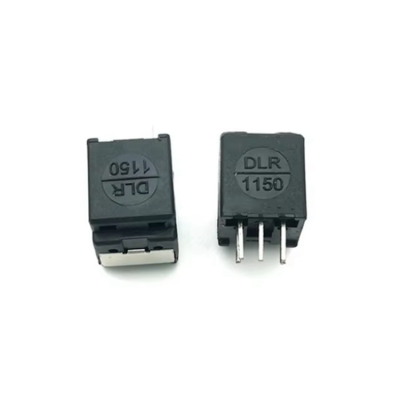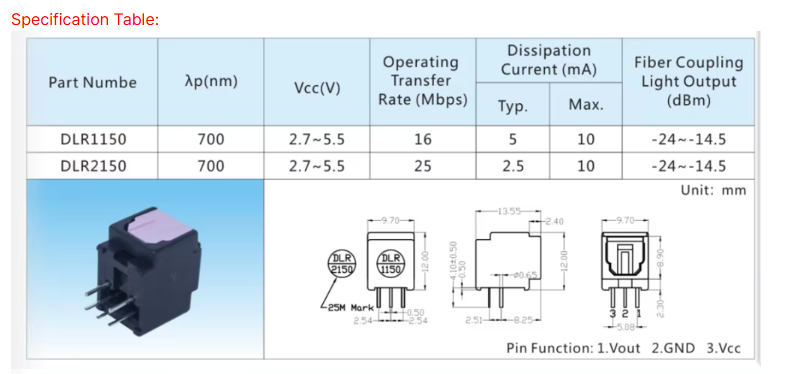



16M optical fiber audio refers to the technology that uses optical fiber as the transmission medium to achieve digital audio signal transmission at a data transmission rate of 16Mbps. It replaces traditional electrical signals with optical signals, solves the problem of electromagnetic interference, and supports the transmission of high-fidelity audio formats. It is widely used in home theaters, professional audio and other scenarios.
Models:Toslink DLR1150 Toslink DLT1150
Advantages of optical signal transmission
1. Anti-interference:
Optical signals completely isolate electromagnetic interference, avoiding the "bottom noise" problem in traditional electrical signal transmission, and are especially suitable for scenarios that are sensitive to sound quality.
2. Long-distance transmission:
With plastic optical fiber or glass optical fiber, the transmission distance can reach 10 meters to hundreds of meters, far exceeding the 5-meter limit of analog audio cables.
3. Device compatibility:
Supports consumer-grade devices (such as TVs, game consoles, amplifiers) and professional equipment (such as digital mixers, audio processors.
Application scenarios and typical cases
1. Home audio and video entertainment
High-definition audio and video separation:
Audio is transmitted through optical fiber to avoid signal interference and achieve a cinema-level multi-channel experience.
2. Game console connection:
For example, PS5/Xbox Series X outputs lossless audio to the amplifier through optical fiber, reducing latency and improving sound quality.
3. Professional audio system
Stage performance and recording studio:
Long-distance transmission of multi-channel digital audio, 16Mbps can meet the signal distribution needs of small and medium-sized mixing consoles.
4. Broadcasting and monitoring:
Anti-interference optical fiber links are used for broadcast-level audio return or audio acquisition of security cameras.
Industrial and medical equipment
5. Automation control:
In factory environments, optical fiber audio is used to transmit commands between devices to avoid interference from strong electromagnetic sources such as motors.
